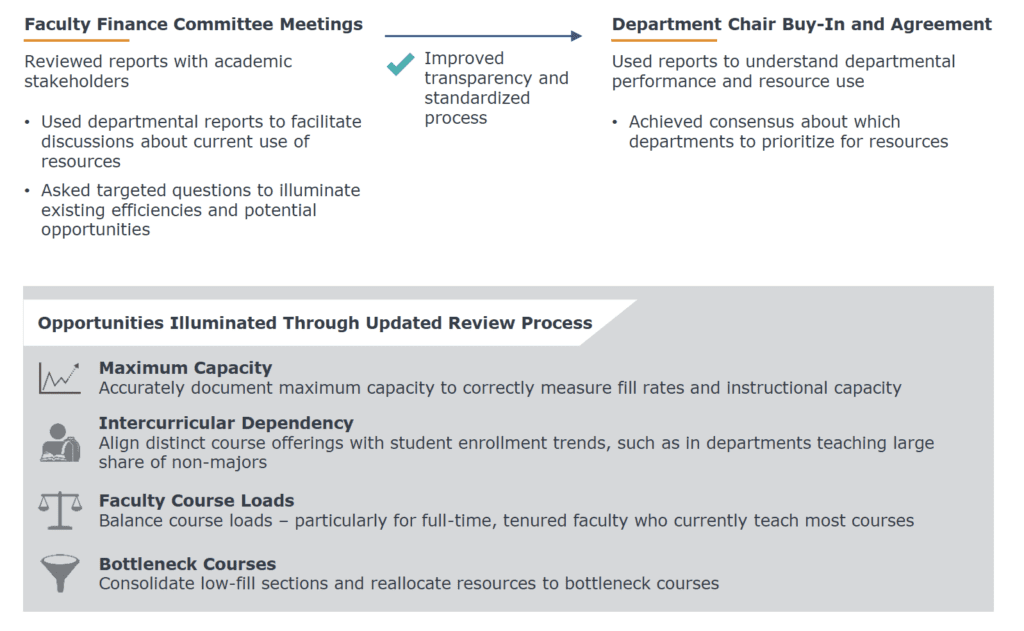Embedding Data in the Review Process to Improve Resource Allocation at St. Ambrose University
Streamlining Department Review with Standardized Data
St. Ambrose University (SAU) is a private university located in Davenport, IA with a total enrollment of 2,916.
- type
- Private
- location
- Midwest
- undergraduates
- 2,916
-
The Challenge
Department chairs and deans lacked accessible data to inform and measure the impact of resource allocation decisions. Existing reports included disparate data points and required extensive manual analysis.
-
The Solution
SAU used Edify to standardize all required data, then produced reports with custom data and filters for each department Chair. Edify enabled SAU to use key department-level metrics to inform resource requests and make allocation decisions. Streamlined, customized reports provided the exact data department Chairs needed to see, increasing decision-making efficiency.
-
The Results
SAU’s partnership with Edify has improved transparency in the resource allocation process. With easily accessible data, the labor-intensive and time-consuming process of analyzing different data points has been drastically reduced. Additionally, SAU has identified opportunities to shift resources to high-demand departments.
Impact Highlights
1,000
hours saved by eliminating manual data collection and analysis$500K
understanding what positions needed to be replaced after a retirement incentive was offered100%
departments reviewed, instead of select handful of departmentsStreamlining Department Review Process with Standardized Data
In previous years, SAU’s Faculty Finance Committee (FFC) reviewed data for a few select departments. Using Edify, the finance team was able to create department-level reports to measure the health of all departments. With access to operational and financial metrics, department chairs understood how their operational decisions impacted their financial results. The reports analyzed 40 departments and used 18 metrics for a comprehensive but streamlined view of critical metrics.
Surfacing Resource Reallocation Opportunities Across Departments
Leveraging the reports generated for each department, the FFC was able to engage in data-supported conversations with deans, chairs, and faculty. Together, they reviewed the reports to identify insights and opportunities.

Great to see you today! What can I do for you?
